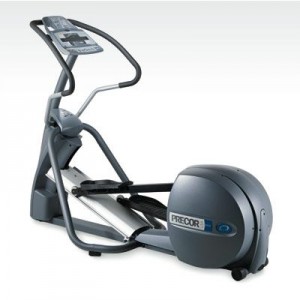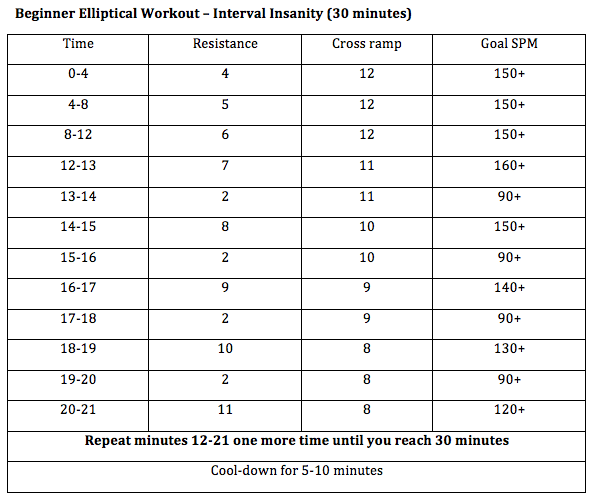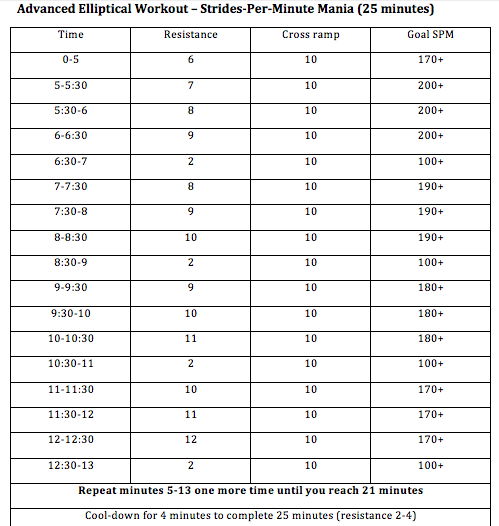The elliptical trainer is one of the most popular cardio machines at the gym because it requires a negligible learning curve to do it, and is low impact and easy on the joints. It targets the quads, glutes and hamstrings and can pack a 10-calorie-per-minute punch when done at a moderate intensity.
As a hard-core and dedicated exerciser, I have to admit for many years I did not respect the elliptical they way I did the stepmill, the rower or even the treadmill. It simply didn’t seem difficult, and the way most people did it, reading a magazine and barely breaking a sweat, ruled it out as effective in my mind.
Well, a few years ago I began dealing with plantar fasciitis (gone now) and all of a sudden my options were limited to non-impact activities. I was forced to face the elliptical trainer. I was determined to make it a great workout incorporating some of my favorite high-intensity intervals, resistance techniques and balance drills. Needless to say, I have a newfound respect for the elliptical, because if done correctly and with intensity, it can help strip fat, sculpt the legs and offer variety to keep the body responsive.
Inefficient cardio burns more cals Elliptical Rule #1: Do not hold onto the railings. The only exceptions include people who are brand new to exercise or are older and frail (and even these individuals should be able to balance without them over time and with practice). Doing the elliptical sans hands is an instant results booster in terms of sculpting the gluteus medius, inner thighs, outer thighs and improving balance and coordination.
Your feet are planted on the skis so falling off should not be an issue (as it might with the stepmill). The first thing to notice when letting go of the railings is that you are forced to balance and recruit more leg muscles do the movement. Your lateral movement is not longer stabilized through your arms, which forces the inner and outer thighs to become automatically more involved. Your cadence might become “off” too, one leg moving faster than the other making you feel lopsided at times.
All of these balance and coordination challenges are actually beneficial in terms of results. The more inefficient you are at a movement pattern, the more calories you will burn. This is one of the reasons why doing the exact same workout everyday will eventually stop producing results—the movement pattern becomes too efficient and ingrained.
If you are using an elliptical with moving arms, you can either bypass them entirely or use them in a way that recruits the arm muscles too. For example, resist the urge to simply let the arms follow the legs, and instead jack up the resistance and use the arms to literally push and pull the passive leg movement.
Stride and sculpt Some elliptical trainers have varying degrees of crossramp incline. These are great when used to manipulate the targeted area of the leg. As a general rule, the lower the crossramp, the more the focus will be on the quad, while at higher crossramps, the glutes and hamstrings will be targeted more.
For many women, we need some help in the glute/hamstring tie-in region, on the back of the leg. The elliptical can create a perfect angle at which to hit this sweet spot and even though spot reduction is nearly impossible, targeted muscle activation is—it is similar to performing a light-weight/high-rep set of glute kick-backs in terms of its motion.
Position the crossramp somewhere in the middle-to-high range and increase the resistance until it feels similar to a strength training workout for the legs. Slow, deliberate movements at a high resistance will target the glute/hamstring tie-in, and will produce results with consistency.
Don’t read a magazine! Bring the intensity Most elliptical machines at your gym will have not only a “Resistance” and “Crossramp” measurement, but also something called “Strides per Minute (SPM).” SPM is a measure of how fast your legs are moving and it is a great way to monitor your intensity.
For example, I have included elliptical workouts below, each of which dictate certain SPM above which you should strive to stay, at a given resistance. This intensity goal helps ensure results. When doing elliptical intervals, during “pushing” segments attempt to maintain the desired/indicated SPM, while on your recovery segments, you may move as slow as you like.
I have incorporated 2 elliptical workouts for you guys–one beginner and one advanced. Depending on your fitness level, incorporate them into your current exercise regimen and remember to bring the intensity. As you move through the different resistances, focus on your strides-per-minute (SPM) and do your best to breach a perceived exertion between 8-9 (on a scale of 1-10) on the tough intervals. During the rest periods, go at whatever speed you like and recover slowly so that you can push just as hard on the next bout.



